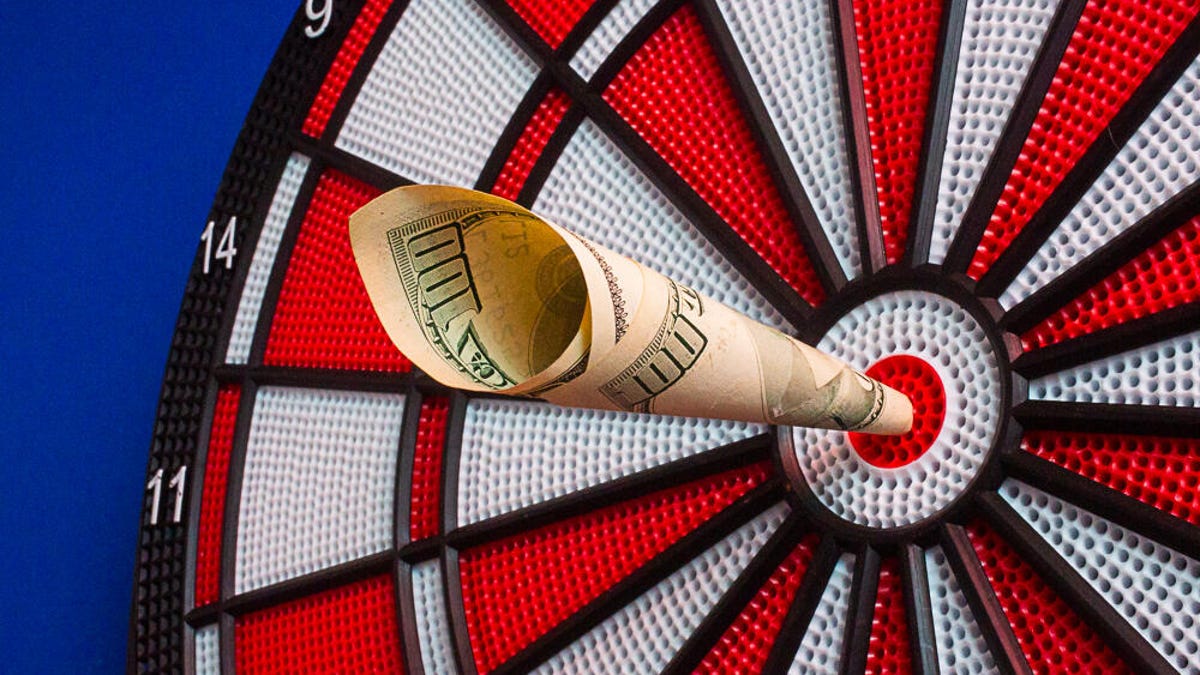New stimulus check cutoff means millions won't get the full $1,400. Here's how
The Senate passed a new version of the stimulus bill, which lowers the income limit for millions of people. Here's exactly what that means.

A targeted stimulus check could mean some people could get $1,400 and others could get nothing.
The nearly $2 trillion stimulus bill passed the Senate on Saturday, picking up some significant amendments to the provisions for federal unemployment insurance and the third stimulus check, which mean tens of millions of people will get less money than they may've expected.
For the new stimulus checks specifically, the $1,400 per person maximum remains (including for dependents), but an effort to "target" the payments would result in stricter rules around an income cutoff. That means the payment will get smaller quicker for any amount you make above a certain level, and fewer people overall would receive a partial payment. More people wouldn't qualify for a check.
Though the House will still need to pass the amended bill (PDF), it's projected to do so without additional amendments, which means the current legislation is likely to be final. We'll explain how your yearly income fits in to the new, targeted plan. For more information, here's when a third stimulus check could arrive, how tax season could complicate your stimulus payment and what to know about qualifications for a third stimulus check. This story was updated with new information.
How the stimulus check 'targets' would officially change
The lower cap limits likely to become law would exclude individuals and families defined as higher-income earners. The initial proposal would've cut off single taxpayers who make $100,000 a year -- the new amendments drop that down to $80,000.
Senate vs. House income caps
| Senate check income limits | House check income limits | |
| Single taxpayer | Full payment below $75,000; cutoff at $80,000 | Full payment below $75,000; cutoff at $100,000 |
| Head of household | Full payment below $112,500; cutoff at $120,000 | Full payment below $112,500; cutoff at $150,000 |
| Married, filing jointly | Full payment below $150,000; cutoff at $160,000 | Full payment below $150,000; cutoff at $200,000 |
According to the Institute on Taxation and Economic Policy, 60% of Americans would receive a full payment under both the House and the Senate plans. The Senate change, however, would affect the highest earners, where more than 11 million adults and over 4 million children would be blocked from receiving a check for any amount.
The new income cap limits are lower than that for the $600 check -- at $87,000 for an individual, $124,500 for a head of household and $174,000 for families -- but the amount of money that people who qualify could receive might be more than twice the amount of that second check.
Here's what happens without a 'targeted' $1,400 stimulus check
If the $1,400-per-person stimulus check followed the exact same formula as the first two payments, people considered high income would get all or part of the maximum payment, in addition to all the people Congress actively wants to supply with stimulus money.
Without changing anything except the maximum a person could get, a much higher $1,400 maximum would make it so that even single people who earn $100,000 would get a partial check. The size of that payment would otherwise balloon with dependents involved. For example, single taxpayers with an AGI below $75,000 would receive the full $1,400 check. At $85,000, they would receive $1,150; at $90,000 a year, they would get $650; and if they make $102,900, the Treasury would send a stimulus check for $5.
That all comes down to the way the mathematical equation works out. It's complicated. In essence, you plug in the stimulus maximum ($1,200 for the first payment; $600 for the second), your adjusted gross income and the number of dependents you have. Interestingly, adding in dependents could make it possible for people who exceeded the income limit of the first two checks to still get a partial payment. Read more about stimulus math here.
If lawmakers want to keep the $1,400 per-person maximum but ensure that people who make, for instance, $100,000 a year don't get the payment, the formula would have to become more "targeted." That's the discussion now.
How new qualifications could factor in
In addition to supporting larger stimulus checks, Biden also wants to include two previously excluded groups: dependents of any age (not just children under 17) and all families with mixed-status citizenship. Combined, that could potentially extend stimulus funds to nearly 20 million people who previously might not have been counted toward the family total. The Senate is also considering restrictions around stimulus checks for undocumented immigrants.
When it comes to divvying up stimulus check money, there's more than one option.
If passed, the outcome would most likely be a larger stimulus check for families that previously qualified (in the case of 17-year-olds and older adult dependents), and some mixed-status families qualifying for a new check for the first time. In all cases, families would have to meet all other eligibility requirements -- like an income limit -- to receive a future stimulus check.
For more information, here's the current timeline for a third stimulus check and here's what to know about stimulus check qualifications. Finally, here's what to do if you're missing all or part of your stimulus check.



